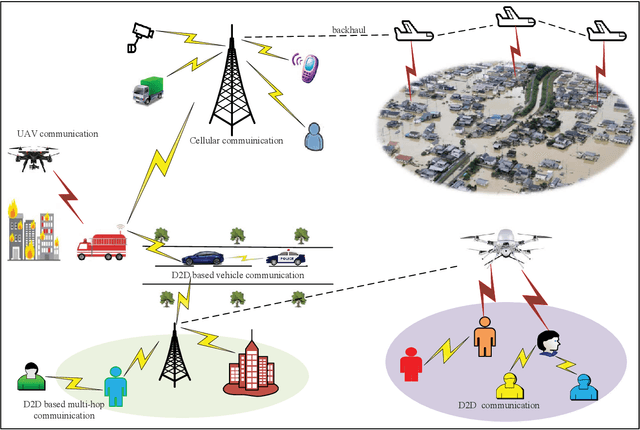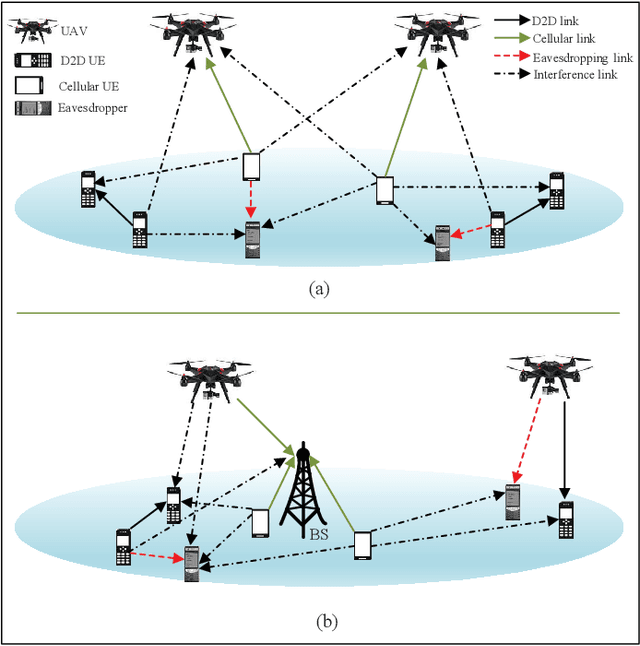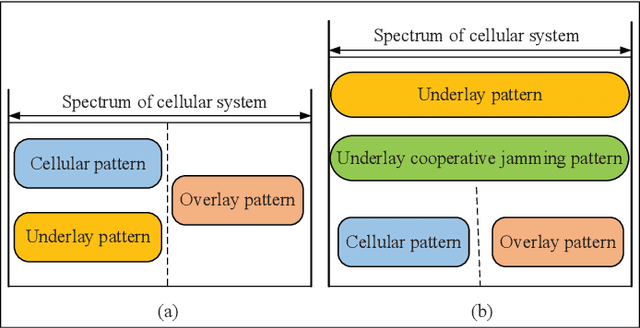B. Yang
Spectrum Sharing for Secrecy Performance Enhancement in D2D-enabled UAV Networks
Jan 05, 2022



Abstract:With the assistance of device-to-device (D2D) communications, unmanned aerial vehicle (UAV) networks are anticipated to support widespread applications in the fifth generation (5G) and beyond wireless systems, by providing seamless coverage, flexible deployment, and high channel rate. However, the networks face significant security threats from malicious eavesdroppers due to the inherent broadcast and openness nature of wireless channels. To ensure secure communications of such networks, physical layer security is a promising technique, which utilizes the randomness and noise of wireless channels to enhance secrecy performance. This article investigates physical layer security performance via spectrum sharing in D2D-enabled UAV networks. We first present two typical network architectures where each UAV serves as either a flying base station or an aerial user equipment. Then, we propose a spectrum sharing strategy to fully exploit interference incurred by spectrum reuse for improving secrecy performance. We further conduct two case studies to evaluate the spectrum sharing strategy in these two typical network architectures, and also show secrecy performance gains compared to traditional spectrum sharing strategy. Finally, we discuss some future research directions in D2D-enabled UAV networks.
 Add to Chrome
Add to Chrome Add to Firefox
Add to Firefox Add to Edge
Add to Edge